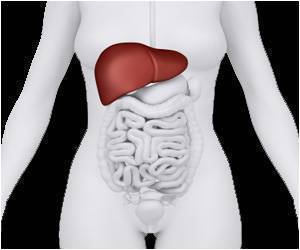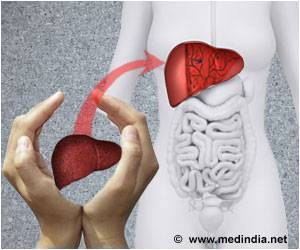
Nazdana was born last August with a Urea Cycle Disorder (UCD), a genetic disease that causes ammonia to build up in the body that, if untreated, would lead to brain damage and death. Ammonia is naturally produced as the body uses protein but, for those with UCDs, the process of converting ammonia to urea (a harmless substance which gives urine its yellow colour) does not work properly.
The condition is incurable and very rare: Alberta Children's Hospital treats about two children with a UCD per year. In Canada, about 50 babies are born annually with the condition.
Each time ammonia builds up, there is a risk of neurological damage but transplanted liver cells are expected to help Nazdana's liver to keep the ammonia down to safe levels.
"We have been monitoring Nazdana closely and are happy to report that she has tolerated the liver cell transplant well, she is stable and can return home to Winnipeg," says Dr. Khan, who is also an assistant professor of medical genetics and pediatrics at the University of Calgary, and a member of the U of C-AHS Alberta Children's Hospital Research Institute for Child and Maternal Health. "This could represent a big leap forward in managing these cases. It's a promising new bridge therapy that could improve the odds of Nazdana surviving until she is able to undergo a liver transplant."
The long-term stabilization of ammonia levels resulting from liver cell infusion buys children time until a matching liver can be found and transplanted.
Advertisement
Without conventional treatment, most newborns with a UCD die within the first two weeks of life. Special medications and a protein-restricted diet improve survival rates but the brain remains exposed to high ammonia levels and even children who survive have a high risk of brain damage. The only long-term treatment is a liver transplant but a transplant in a small child has less chance of success and there is limited availability of organs.
Advertisement
Nazdana currently weighs about 4.5 kilograms and ideally will have to reach a weight of at least seven kilograms before the chances of a successful organ transplant improve. In the meantime, the small amount of transplanted liver cells allow her to get the nutrition, including protein, she needs to grow while helping to keep her ammonia under control.
Nazdana's father, Jouhar Ali, is grateful for the care his daughter has received.
"The health care people – the nurses and the doctors – they have all been outstanding. I have no words to explain it," says Ali. "I really appreciate and am very thankful for what they have done."
The current study allows for three patients to be enrolled. Dr. Khan expects the next candidate for liver cell transfusion will be a baby from southern Alberta who is currently hospitalized for management of high ammonia levels.
"It's largely because of the organizational support we have through Alberta Health Services and the University of Calgary that we were able to be the first in Canada to perform this therapy," Dr. Khan says. "In particular, it took the coordination and support of a great many people at Alberta Children's Hospital to make this happen."
Alberta Health Services is the provincial health authority responsible for planning and delivering health supports and services for more than 3.8 million adults and children living in Alberta. Its mission is to provide a patient-focused, quality health system that is accessible and sustainable for all Albertans.
Source-Eurekalert














